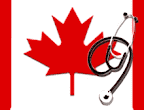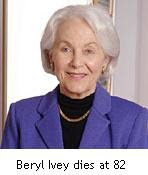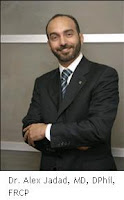 On orders from the provincial health ministry, Humber River Regional Hospital quietly released the worst death rate of any Toronto-area hospital.
On orders from the provincial health ministry, Humber River Regional Hospital quietly released the worst death rate of any Toronto-area hospital.
On Monday, more than a week after the Canadian Institute for Health Information published a high-profile report containing death rates for hospitals across Canada, Humber broke its silence to report a rate of 136, meaning its in-hospital death rate was 36 points above the national average of 100.
Humber's rate is the second worst in Canada. Only Kitchener's Grand River Hospital fared worse, with a rate of 142.
The release of Humber's data also boosts Scarborough General Hospital to second worst in the GTA; its death rate was 134.
Humber's figures were omitted from the CIHI report because hospital officials insisted data inconsistencies had skewed the numbers. Hospital officials ultimately released the numbers in a brief statement on a media wire service. Calls to three Humber representatives were not returned yesterday.
The disclosure came at the insistence of the provincial government.
On Dec. 4, Health Minister George Smitherman told the Legislature that Humber would release its numbers in one week.
"My office has been in touch with Humber River Regional Hospital. In the interests of transparency, I'm pleased to tell the House that they'll be releasing their data within a week," he said in response to a question from Laura Albanese, MPP for York South-Weston.
"By next year, our government will have passed a regulation that would require all hospitals to report this data, without exemption, to ensure this information continues to drive much-needed improvements in patient safety."
Humber cited a "misunderstanding" in the data related to end-of-life care (palliative and "do not resuscitate" cases) as the reason for its numbers not being publicly released as part of the CIHI press conference Nov. 29.
Mortality rates for 85 large, Canadian, acute-care hospitals and 42 health regions, except Quebec, were released at the news conference for the first time.
"The coding discrepancies were serious enough that to release the (data) presented in the preliminary report would be misleading," the hospital said in a statement.
It said they "embrace the concept that patients deserve transparency and accountability from public institutions" and that the latest numbers show they are "producing significant improvement" in data quality.
However, CIHI told the Star yesterday Humber's rate of 136 is the same as in its original calculations.
The non-profit CIHI uses the hospital standardized mortality ratio, which looks at 65 illnesses that account for 80 per cent of in-hospital deaths, to prepare its report. Anything below 100 is better than average, anything above is worse.
The figures exclude patients in palliative care.
All the numbers crunched by CIHI were sent to the hospitals in early autumn so they could be checked, said CIHI's Christina Lawand.
Grand River officials also say their ranking is misleading. "As a consequence of incorrectly filed data sent to CIHI, over 32 percent of the mortalities included in the Grand River Hospital's ranking should not have been counted because they were in fact palliative care patients being provided end-of-life comfort, not curative, care," said Nancy Hewat, Grand River's executive director of foundation and public affairs.
In Toronto, the University Health Network had the best overall rate, 87, for its three-hospital system. The now-closed Peel Memorial Hospital also had a low rate, 81.
For years, Canadian hospital administrators have known the death rates inside their hospitals but they were never publicized. The disclosure followed a year-long Toronto Star investigation into medical secrecy that examined the lack of information available to patients. As part of the series, the Star urged the public reporting of death rates.
Humber was created in 1997 by the merger of Humber Memorial, Northwestern General and York-Finch General Hospital. It sees about 365,000 outpatients each year and has 100,000 emergency visits, according to its website.
Smitherman told the Legislature his government sees transparency as something that is "powerful and beneficial to our patients."
He also announced that by the beginning of April it will require all hospitals involved in Ontario's Wait Time Strategy to report infection rates in three areas.
And, by the end of July, it will introduce a regulation requiring all provincial hospitals to inform patients about medical errors.
The Star
Editor's opinion:
"I was kind of expecting this when Humber River General was reported to be the only hospital that hadn't submitted the numbers yet (read related article).
That to me, was really suspicious!"
Related article:
 Amid growing concern over drug-resistant super bugs and non-healing wounds that endanger diabetes patients, nature's original antibiotic honey, is making a comeback.
Amid growing concern over drug-resistant super bugs and non-healing wounds that endanger diabetes patients, nature's original antibiotic honey, is making a comeback.









